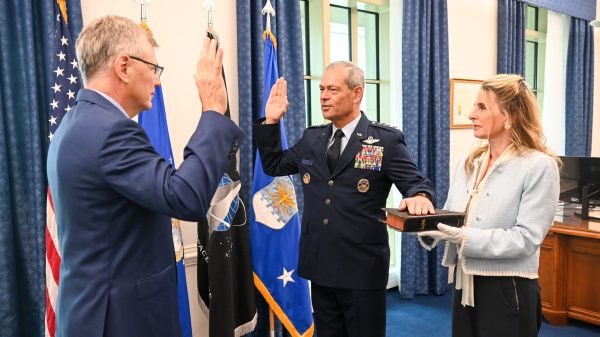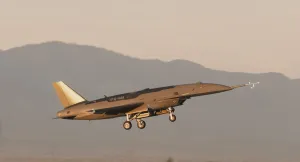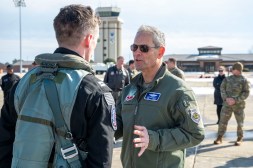USAFE commander expects new drones to ‘change quite a few things’ for Air Force readiness

Next-generation drones known as collaborative combat aircraft are expected to have major operational impacts on the Air Force — but the commander of U.S. air forces in Europe and Africa also anticipates significant changes for maintenance and training as the systems are integrated into the service.
CCAs are a top modernization priority for the Air Force, which is spending billions of dollars on the technology and hopes to begin fielding the platforms in the next few years. The AI-enabled autonomous jets could perform a variety of missions, including air-to-air combat, strike, electronic warfare, or intelligence, surveillance and reconnaissance.
Earlier this year, Anduril and General Atomics were selected for the development-for-production phase of increment one, and the two companies are now gearing up to conduct flight tests of their respective air vehicles. Other drone makers are also expected to have an opportunity to compete for the program down the road.
Meanwhile, officials on Monday revealed that the service is also currently working with five vendors contracted to build the mission autonomy capabilities for the future robotic wingmen.
On Tuesday, Gen. James Hecker, commander of U.S. Air Forces Europe (USAFE) and Air Forces Africa, said he’s thinking about how the next-gen unmanned aerial systems will be integrated into the fleet and affect operations, maintenance and training.
“CCAs will … change quite a few things, quite honestly,” he said during a virtual event hosted by the Mitchell Institute. “Obviously, they’re going to be cheaper because you don’t have a man in the aircraft, so all the life-support systems and those kinds of things [won’t be necessary]. So that brings the cost down … Depending on the cost of the CCA — and I think we’re gonna see a vast range [in that regard] — some will be, you know, more acceptable if, you know, to put them in high-risk situations and attrite them because of the cost. But some are probably going to be pretty expensive and you’re not going to put them in that situation, or you’re going to save it for a unique mission that you know that is high risk that you need to get the mission done.”
Air Force Secretary Frank Kendall has said he hopes the drones will cost about one-third the price of a manned F-35 fighter jet. The goal is to enable the service to beef up its fleet without breaking the bank on more expensive crewed jets.
However, platform cost and operating concepts are only part of the equation.
“How do you train with them?” Hecker said. “I think we’ll always have some of them that are available at an airfield that will take off with an F-35 or with an F-22 and carry, you know, extra AMRAAMs [Advanced Medium-Range Air-to-Air Missiles] for them, or some electronic attack for them, and those kinds of things. But I think the majority of them are going to be sitting in a warehouse somewhere, hopefully in theater, so you can get to them fairly quickly. And they’ll be maintained, but it’s not going to be a daily maintenance cycle like we think of an aircraft [that human pilots fly]. It’s going to be quarterly, yearly, who knows? But we’ll figure that out. And they’ll be there for when we need them.”
“So not only is the cost cheaper because you don’t have to put the man stuff in there. But it’s cheaper because you’re not flying it all the time, so you don’t have a [high] flying-hour cost that goes with a manned aircraft … And of course, there’s going to be simulators involved so you can still train without these things flying with you every day,” he added.
He suggested that officials will need to be prepared to adjust.
“This is new. My hunch is we won’t get it exactly right when we — when we bring these things out. We might have too many on the airfield or not enough on the airfield … So there’s going to be a learning curve as we go through this. But I think everyone’s excited about it, quite honestly. And a lot of, you know, a lot of companies are coming up with some unique ideas. And some of these are relatively cheap,” Hecker said. “So I’m excited about it and I look forward to it.”






